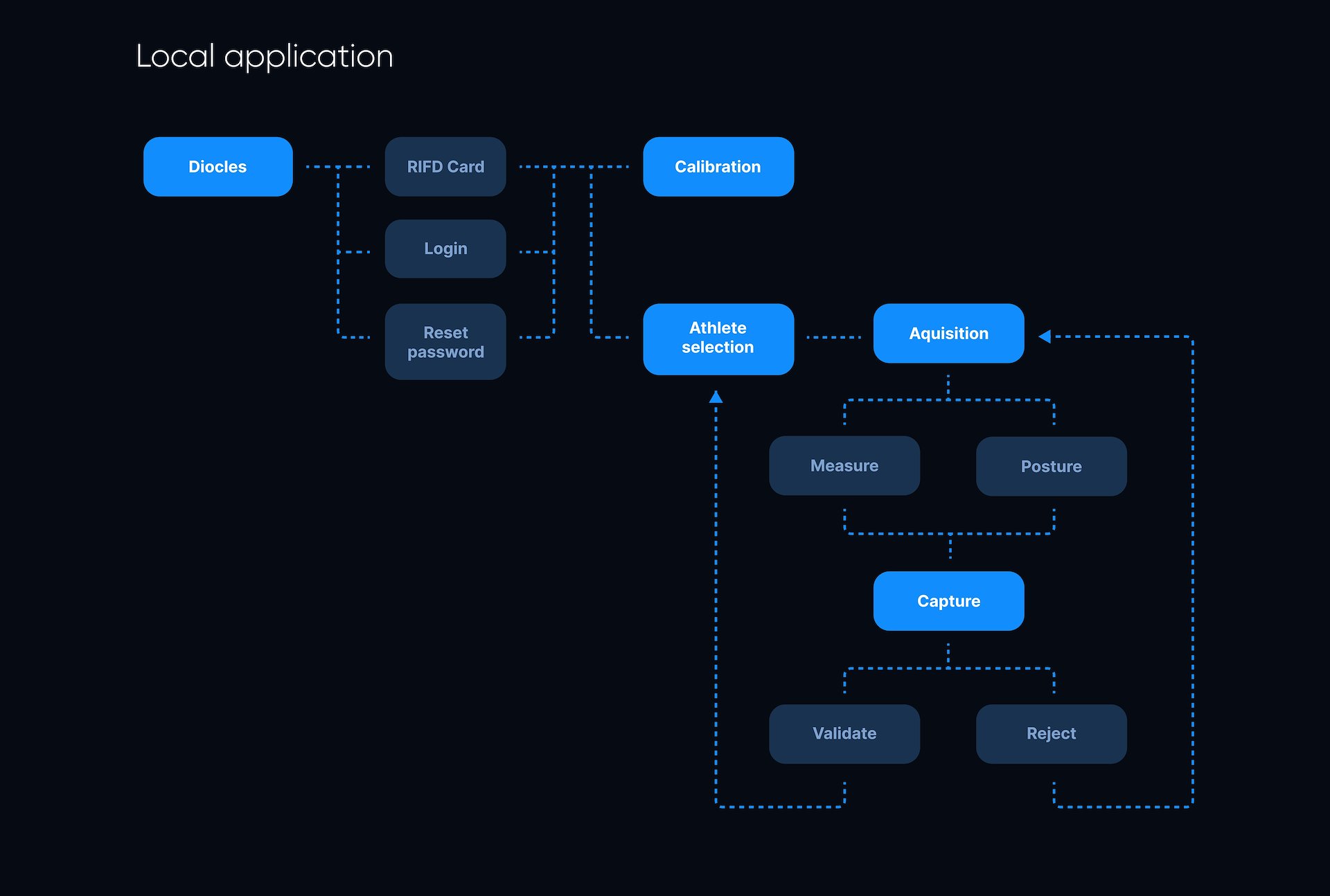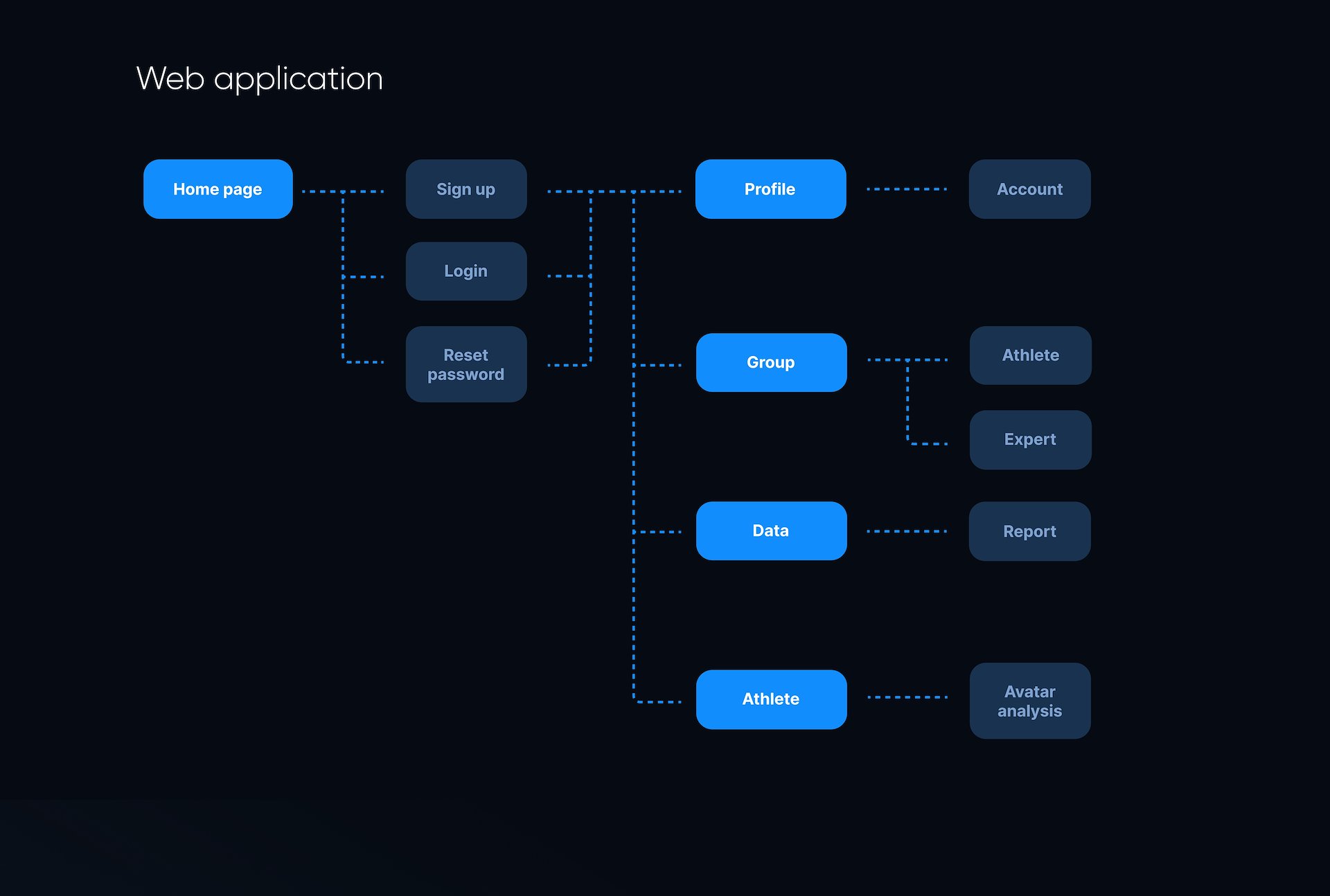DIOCLES
Technology for elite sports
— Industries
Medical Sport Information Technology
Big Data
— Role
(UX/UI Designer)
(Product Designer)
Web app design
Local app design
Product design
— Team
2 x Designer
1 x Project Manger 1 x Imaging Research Engineer
1 x Senior Software Engineer 1 x Junior Software Engineer 1 x Doctor-Engineer in R&D
1 x Frontend Developer
2 x Backend Developers
— Timeframe
2018 – 2020 (2 years)
— Page
(Local app)
Login
Calibration
Athlete selection
- Data Acquisition
- Data verification
- (Web app)
Login Profile
Group management
Data visualization Athlete Analysis
My Role
As one of two designers at Diocles and its partner company Youdome, I co-led the redesign of the athlete medical assessment journey — transforming a traditionally manual, time-intensive process into a seamless digital experience using 3D imaging technology and human-centered design. Our work supported elite sports professionals and medical teams across Singapore, Monaco, and Lisbon.
Together, we led the end-to-end design of platforms for athlete registration, 3D scanning, and medical reporting — accelerating the check-up process by up to 80%. I was actively involved in defining user flows, automating key procedures, and ensuring GDPR compliance, all while improving clarity and efficiency for users.
At Youdome, we digitized physical assessment methods by building intuitive 3D scanning interfaces and applying visual enhancements like shading and contrast to support more precise medical analysis. I worked closely with researchers, developers, and manufacturers to develop the MVP, run real-time testing with athletes and sports doctors, and refine the imaging system through calibration and mesh optimization.
Our contributions bridged UX, hardware prototyping, and medical visualization — enabling the product to scale with both technical accuracy and intuitive usability in high-performance sports environments.
Technology for elite sports
Diocles provides cutting-edge 3D imaging and measurement technology for elite sports — helping professionals monitor athletes’ physical condition, reduce injury risk, facilitate rehabilitation, and improve performance.
The Challenge
Despite the powerful technology behind Diocles, we faced several design challenges:
- - Overly complex medical interfaces: Traditional tools were difficult to use and visually overwhelming due to excessive terminology and data overload.
- - Time-consuming check-up process: Weekly assessments for 20–30 athletes could take up to 3 hours per team, making routine checks unsustainable.
- - Low engagement: Experts found existing systems tedious, reducing their willingness to use them regularly.
- - Disconnected tools: Data was siloed, and many tasks still required manual input and cross-referencing.
Our Objective
We aimed to: - Simplify the experience for both medical professionals and non-technical users.
- Streamline repetitive tasks to speed up the medical check-up process.
- Transform the clinical process into a more engaging and user-friendly journey.
- Ensure data privacy and GDPR compliance.
- Inspire confidence and regular usage through intuitive design and visual clarity.
Research and Insights
We conducted research through:
- - Interviews with medical experts and sports teams
- - Review of existing medical diagnostic platforms
- - Hands-on testing with athletes and practitioners
Key Insights:
- - Experts needed fewer clicks, cleaner visuals, and faster navigation.
- - A gaming-inspired interface could increase engagement and reduce friction.
- - Users preferred visual-first data, simple language, and automation.
Design Strategy
We structured the system into two platforms:
A. Local App (Offline)
- - Designed for 3D body data acquisition
- - Optimized for high graphic intensity, fast processing
- - Operates without internet for maximum hardware performance
- - Allows quick scan in <30 seconds
B. Web App (Online)
- - Built for diagnostics, monitoring & reporting
- - Accessible worldwide to medical teams
- - Provides expert dashboards, profile management, and report generation
Visual Language and UI Design
To make the interface feel less clinical:
- - We used gaming-inspired visuals for energy and clarity
- - Large buttons for touchscreen usability
- - Symbol-based icons for quick understanding
- - Clean, minimalistic typography and layout
- - Color-coded states to visualize posture, growth, and imbalances

Research and Insights
We conducted research through:
- - Interviews with medical experts and sports teams
- - Review of existing medical diagnostic platforms
- - Hands-on testing with athletes and practitioners
Key Insights:
- - Experts needed fewer clicks, cleaner visuals, and faster navigation.
- - A gaming-inspired interface could increase engagement and reduce friction.
- - Users preferred visual-first data, simple language, and automation.
Outcome and Impact
- Check-up time reduced by 50%+, even for large teams
- Medical staff reported faster understanding of complex data
- Interface improved daily usability and frequency of use
- Prototype successfully deployed and tested with live athlete data
- - System fully compliant with privacy standards and scalable to other diagnostic tools


